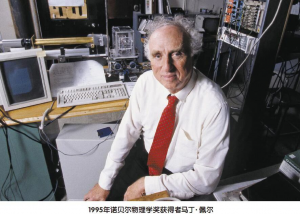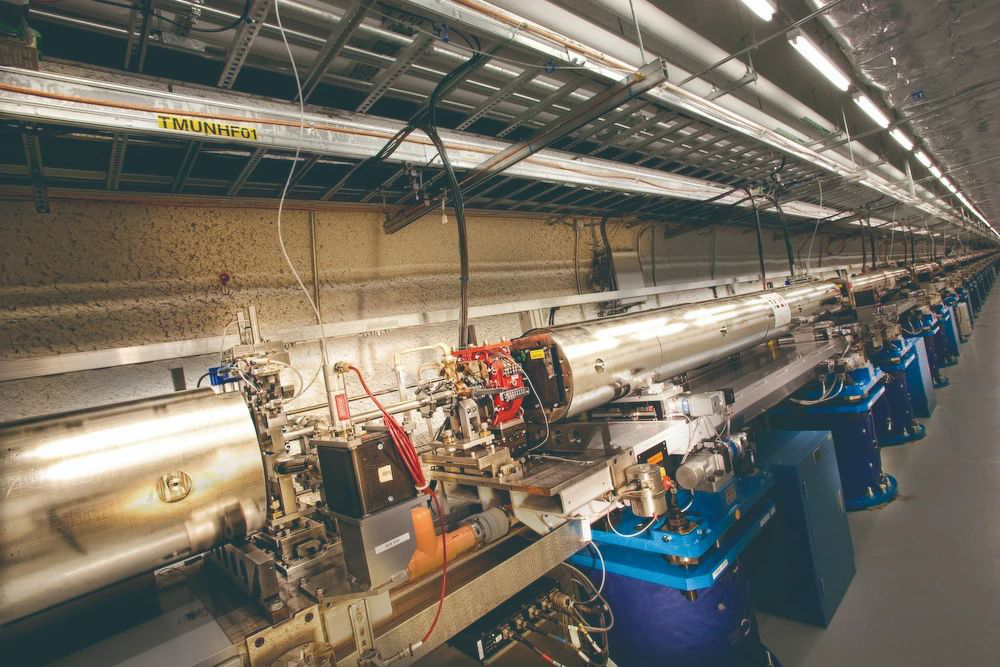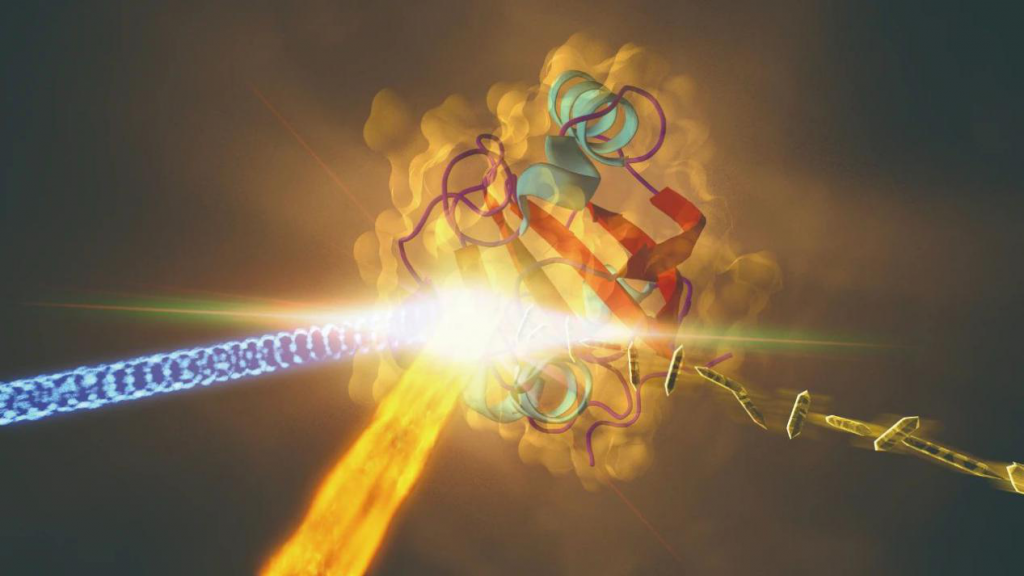
In physics, if there are no high-speed charged particles, we don’t even know what the structure of the atom is. Since 1909, British scientist Rutherford has bombarded the metal foil with a high-speed alpha particle beam with a velocity of 2×107m/s ( Alpha particle scattering experiment), human beings gradually lifted the veil of atoms. By analyzing the results of the experiment, Rutherford discovered atomic nucleus and protons, and predicted the existence of neutrons.
The particle accelerator can generate a strong electromagnetic field, through the electric field force and the magnetic field force, it accelerates the charged particles inside, and produces high-speed, high-energy charged particles. The SLAC National Accelerator Laboratory, located on the campus of Stanford University, is dedicated to the construction of particle accelerators and related research on high-speed particles. Since the construction of this laboratory, it has made numerous achievements, including three major discoveries that won the Nobel Prize!
Quark was found here!
In 1911 and 1918, Rutherford discovered the nucleus and protons respectively. In 1932, Rutherford’s pupil, British scientist James Chadwick, discovered the neutron. So far, humans believe that elementary particles (elementary particles refer to the smallest or most basic unit of matter that people recognize) are photons, electrons, protons, and neutrons. Protons and neutrons are the most important particles that make up matter.
But are there really no particles smaller than protons and neutrons? The particle accelerator produced in the 1930s amplifies people’s doubts-high-speed particles collide with each other to produce many unknown particles. These particles are actually smaller than protons and neutrons, and there are more than 100 kinds of them. Scientists put Together with protons and neutrons, they are called hadrons. However, so many particles cannot be elementary particles.
Some scientists say hadrons are made up of smaller particles called quarks. In the early 1960s, American scientist Murray Gell-Mann put forward the quark theory, which believed that protons and neutrons are composed of three quarks. There are 3 types of quarks, including up quarks (u), down quarks (d) and strange quarks (s). But how to verify the existence of quarks? Obviously, we need to smash hadrons to pieces in order to expose their smallest constituent units. This requires the construction of larger accelerators.

Thus, the SLAC National Accelerator Laboratory came into being. SLAC National Accelerator Laboratory (SLAC) is located on the campus of Stanford University in California, USA. It is a national laboratory under the US Department of Energy and is operated and managed by Stanford University. It was built in 1962. At the beginning, its name was “Stanford Linear Accelerator Center” (it also referred to as SLAC), because the laboratory was planning to build a super huge linear accelerator.
The linear accelerator, as the name implies, provides a linear orbit for charged particles to advance and accelerate. Corresponding to this is a cyclotron. The orbit in the cyclotron for charged particles to advance and accelerate is in a circular ring shape, and the particles move in a circle around the center of the circle.
After four years, the world’s largest linear accelerator with a length of 3.2 kilometers was built in 1966, and it was called “the straightest object in the world”. SLAC’s linear accelerator can accelerate electrons to 99.9999999% of the speed of light (the speed of light is the limit speed of objects in space), and the energy reaches 50 GeV. Electrons with such high energy can directly smash protons and neutrons and expose quarks completely.
In the 1960s and 1970s, American physicists Jerome Isaac Friedman, Henry Kendall and Richard Taylor used SLAC linear accelerators to conduct a large number of experiments on electron collisions with protons and neutrons. The analysis of the results and long-term discussion finally proved the existence of three quarks of up (u), down (d), and odd (s) experimentally. The three of them won the Nobel Prize in Physics in 1990.
However, Gell-Mann’s quark theory is imperfect. Although neutrons and protons are indeed composed of 3 quarks, there are more than 3 quarks, but a total of 6 types-up (u), down (d), odd (s), charm (c), bottom ( b) and top (t). The fourth type of charm quark will soon be discovered in SLAC. And the discovery of the quark led to a Nobel Prize in physics
J particles andτparticles!
Even if they don’t know what the J particle is, many Chinese people will not be unfamiliar with this name, because the particle was discovered and named by the well-known Nobel Prize winner——Mr. Ding Zhaozhong, Chinese American。
However, what many people don’t know is that almost at the same time when Ding Zhaozhong discovered the J particle, the American physicist Burton Richter also discovered this kind of particle, which he called theψparticle. The particle was finally named J/ψparticle. As the discoverer of the J/ψ particle, Ding Zhaozhong and Burton Richter won the Nobel Prize in Physics in 1976. What makes us proud is that Mr. Ding Zhaozhong’s acceptance speech was published in Chinese, which made the “Voice of the Chinese nation” appear for the first time at the Nobel Prize award ceremony!
Why is the J particle so important? Because the J particle consists of 1 charm (c) quark and 1 anti-charm (c) quark. From the J particle, people discovered the fourth type of quark-Char (c) quark! Later, people successively discovered the bottom (b) quark and top (t) quark, and the quark theory system was gradually improved.
The place where Richter found the J/ψ particle was in SLAC. But instead of relying on a linear accelerator, he used a electron-positron acceleration ring called “SPEAR” that was built in 1970 and started operation in 1972. The electron-positron accelerator ring is also called the electron-ring accelerator (a type of cyclotron). The electron-ring accelerator can generate positive and negative electrons and accelerate them, then collide, and produce many weird results.
In 1974, the experimental team led by Richter carried out the collision study of matter and antimatter (positron is antimatter) at SPEAR. When positive and negative electrons collide, they disappear in a tiny explosion. In the process, Richter’s team used complex detectors to discover a previously unknown elementary particle, which is the J/ψ particle that sensationalized the global scientific community.

However, the ability of SPEAR is not only this Nobel Prize, it also produced another Nobel Prize in Physics. In 1975, Martin Lewis Perl used SPEAR to do physics experiments and found that a collision between positive and negative electrons produced A new particle called tau, for which he won the Nobel Prize in Physics in 1995. Tau belongs to the third generation of leptons. The first generation of leptons are electrons discovered in 1897, and the second generation of leptons are muons discovered in 1937. Tau is the only lepton that can decay into hadrons. The discovery of tau has made humans a further step in the study of leptons. Leptons and quarks are the basic particles that make up this world. It can be said that SLAC has made an indelible contribution to finding elementary particles.
Popular Stanford synchrotron radiation source
When charged particles move along an arc-shaped orbit at a high speed close to the speed of light, they emit electromagnetic radiation, which is called synchrotron radiation. For a long time, synchrotron radiation has been unpopular with scientists because it consumes the energy of the particles in the accelerator and affects the acceleration effect. But people quickly learned that synchrotron radiation is a very good pulsed light source. It contains a continuous spectrum from far infrared to X-ray.
It has high intensity, high collimation, high polarization, and characteristics that can be precisely controlled. Excellent performance. Synchrotron radiation can be used to carry out scientific research that other light sources cannot achieve-such as measuring the three-dimensional mechanism of proteins, measuring the electromagnetic structure parameters of atoms in materials, and dynamically observing life activities at the molecular level.

In 1973, based on SPEAR, SLAC began to build synchrotron radiation sources. The synchrotron radiation source is named Stanford Synchrotron Radiation Source, or SSRL for short. In 1977, SSRL was completed and put into use. Prior to this, SLAC has always focused on particle physics experiments. Since then, synchrotron radiation experiments have become an important part of SLAC’s work. If SLAC’s linear accelerator and electronic ring accelerator are only used for extremely high-end scientific research, SSRL is very “friendly to the people”, because of its wide range of applications, it is open to various private research institutions and research departments for a fee. SSRL runs for users for about 9 months within a year. There are 32 experimental stations in it for users from universities, industrial departments, government laboratories and foreign research institutions to conduct experiments. At present, nearly 100 American companies have used SSRL, and the number of users is increasing every year.

Of course, not only linear accelerators, SPEAR and SSRL, SLAC also has many very advanced accelerators, such as electronic colliders, linear colliders, etc., which show SLAC’s very strong scientific research capabilities.
Comments